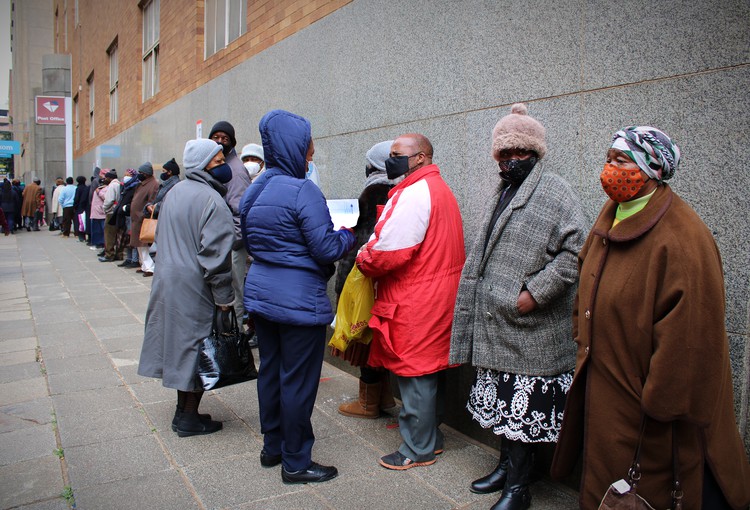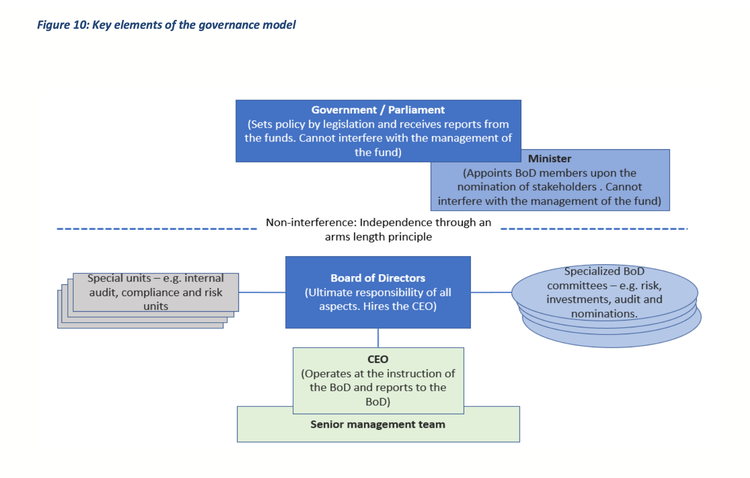National pension reform: Protecting the funds from state capture
There are novel checks and balances
Pensioners stand in line outside Marshalltown Post Office to collect their grants. Archive photo: Masego Mafata.
When the Department of Social Development proposed a national contributory pension fund, the outcry was immediate: the state cannot be trusted with our money.
But would the state be able to capture the funds in the proposed National Social Security Fund (NSSF), described in the Green Paper on Comprehensive Social Security and Retirement Reforms?
Not easily. The Green Paper proposes a governance structure that makes capture difficult. This type of structure might be more common in the years to come, following the likely recommendations of the Zondo Commission.
The money in the fund, to which everyone with a job would contribute, would be protected by the ‘arm’s-length’ principle.
The board of the NSSF would be drawn from a wide variety of sectors that have an interest in the fund. There would be members from government, labour, employers, and civil society.
The minister would appoint members to the board following nominations from the different groups themselves. Directors would be expected to be dedicated servants of the fund, and would have to be well-qualified.
The Green Paper proposes that the fund be protected from the influence of national government by limiting how government can interact with the fund: “Policymakers can raise policy-discussions and propose policy changes, but they cannot interfere in the
day-to-day operation of individual social security funds other than through change of law.”
So while the board would be appointed by the minister, according to the rules of the fund, the CEO of the fund would be appointed by the board, and would answer directly to the board.
Regulation of the fund would be done by two distinct bodies. The South African Reserve Bank (SARB) would take charge of prudential matters — making sure the fund has enough capital and isn’t taking risks — while the Financial Sector Conduct Authority would ensure fair treatment of fund contributors.
The administration of the contributions to the fund would be done by SARS. SARS systems — already in place — would make the administration of contributions and benefits effectively automatic.
Would this be enough to allay concerns over capture?
Pulling it all together
The Green Paper on Comprehensive Social Security Reform would consolidate social security functions currently in different departments. This is in line with present thinking in the National Treasury on “consolidation”, bringing together functions of government that are similar, but located in different departments.
The NSSF would absorb other existing social protection agencies. These would include the Road Accident Fund (RAF, located in the Transport ministry), the Unemployment Insurance Fund and Compensation Fund (UIF and CF, in Labour), and Compensation for Occupational Diseases (in Health).
The Green Paper proposes that all these be integrated into a new ministry solely concerned with social security.
One immediate effect of this consolidation would be to reduce the vast and ineffectual bureaucracies. Costs would be shared under one roof.
At present, as described in the Green Paper, social security policy is “implemented in five different government departments through multiple institutions reporting to different governance structures, which leads to incoherence in both policymaking and implementation.”
In the Green Paper’s proposal, there would be one system for all these.
The Green Paper proposes the creation of a Master Social Security Registry (MSSR), which would hold all information on everyone’s contributions and benefits .
And there would be a Consolidated Public Interface for Social Security (CPISS). CPISS would offer online and telephonic services, and also have offices where the public could bring questions and complaints. These offices would absorb the functions and premises of labour offices and South African Social Security Agency (SASSA) branches, and would help grant beneficiaries look for work - a novel idea in South Africa.
The proposed ‘arms-length’ governance structure of the NSSF. Source: DSD, Green Paper on Comprehensive Social Security and Retirement Reforms
Support independent journalism
Donate using Payfast

Don't miss out on the latest news
We respect your privacy, and promise we won't spam you.
Next: Government to spend R5 million more on unused stadium
Previous: Court rules that District Six eviction was unlawful
© 2021 GroundUp. This article is licensed under a Creative Commons Attribution-NoDerivatives 4.0 International License.
You may republish this article, so long as you credit the authors and GroundUp, and do not change the text. Please include a link back to the original article.
We put an invisible pixel in the article so that we can count traffic to republishers. All analytics tools are solely on our servers. We do not give our logs to any third party. Logs are deleted after two weeks. We do not use any IP address identifying information except to count regional traffic. We are solely interested in counting hits, not tracking users. If you republish, please do not delete the invisible pixel.


